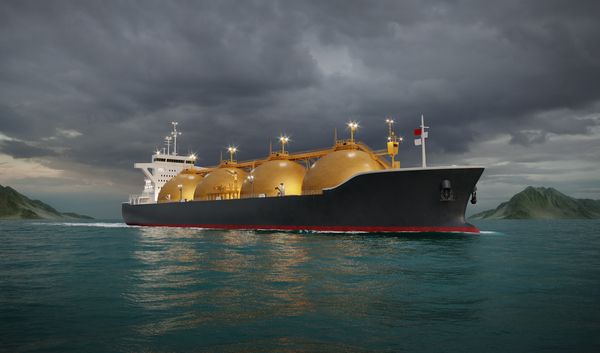For years, natural gas has been a relatively regional product, and producers that had access to major markets via pipelines were the only game in town. The prospect of liquefied natural gas, or LNG, exports from new places all over the world is turning that logic on its head, and so the former big bosses of natural gas are looking to maintain their prominence through an OPEC-style cartel. Let's find out why these natural gas giants are nervous and discover what an organization like OPEC could mean for the natural gas industry.
Under pressureAt the most recent meeting of the Gas Exporting Countries Forum, Russian President Vladimir Putin urged members to defend the traditional method of pricing natural gas, through oil-indexed, long-term contracts. According to Putin, this would be done to maintain the energy security of import countries. Even if Putin's reasoning for this kind of move sounds altruistic, there is certainly a much more self-serving reason to maintain the oil-index price structure: maintaining price control.

Source: wikicommons.org/politsurfer
Unlike the U.S., many of the other natural gas markets around the world are based on long-term pipeline supply contracts that are on a fixed, oil-indexed price. This model has been thrown on its head because of the boom in U.S. natural gas production. Countries that had built up large LNG export capacity to deliver to the U.S., such as Qatar, found themselves without their largest customer, and were looking to dump this LNG on new markets.
To further compound the problem, the U.S. expects to start LNG exports in 2015 when our first LNG export terminal, Cheniere Energy's (LNG +1.68%) Sabine Pass facility, comes on line. It is very possible that all of this LNG trade could undercut oil-indexed prices in markets like Europe and Asia.
Henry Hub Natural Gas Spot Price data by YCharts
As long as the costs to take natural gas, liquefy it, and transport it remain below import prices for these other regions, there is a great opportunity to capture market share from the oil-indexed contracts from places like Russia. This of course, makes the world's largest supplier of natural gas very uneasy because so much of the country's economic health depends on it. Gazprom (OGZPY +0.00%), the Russian gas giant, is the exclusive exporter of natural gas in Russia and accounts for 10% of Russia's GDP.
OGEC doesn't seem to have as good of a ring to it
It is very likely the countries that would be involved in this close natural gas relationship would be the countries who are already members of the Gas Exporting Countries Forum. Combined, these countries represent over 60% of the worlds natural gas exports. That's a greater market share than OPEC's 57% of total oil exports.
| GECF Member Countries | 2011 Natural Gas Exports (Bcfpd) |
| Russia | 21.39 |
| Qatar |
11.00 |
| Norway (observer status) | 9.41 |
| The Netherlands (observer status) | 5.40 |
| Algeria | 5.03 |
| Nigeria | 2.51 |
| Trinidad & Tobago | 1.70 |
| Bolivia | 1.29 |
| Egypt | 1.02 |
| Kazakhstan (observer status) | 0.94 |
| Iran | 0.88 |
| Equatorial Guinea | 0.51 |
| United Arab Emirates | 0.50 |
| Libya | 0.35 |
| Venezuela | 0 |
| Iraq (observer status) | 0 |
Source: U.S. Energy Information Agency
Several of these countries already have significant control over prices in certain regions of the world. For example, both Gazprom and Norway's Statoil (STO +1.26%) are responsible for 40% of Europe's natural gas market, all of which is sold on those lucrative oil-indexed contracts.
What makes an organization like OPEC so powerful, though, is its ability to carry spare production capacity and a willingness to shut off the pump if prices get to low. If the member countries could get on board with this kind of move, it would be a very powerful tool in determining natural gas prices around the world.
What a Fool believes
Could a move like this squeeze the profitability of natural gas exports for the U.S.? Potentially, yes, but there are other places around the world that are more likely to suffer from a move like this. Countries like Australia, which has struggled to keep costs under control and doesn't have feedstock as cheap as in the U.S., are more likely to suffer from this. Chevron's (CVX +0.63%) massive Gorgon LNG project is more than $15 billion over budget, so cost overruns could make the return on investment for these kinds of projects less lucrative.
At the same time, having an OPEC-type price controller would certainly limit how much the U.S. could potentially export at an economically feasible level. Gazprom signed a 30-year deal with PetroChina (PTR +0.00%) that will supply the Chinese company with 3.7 billion cubic feet per day of gas starting in 2018, just about the same time when the majority of the other major LNG facilities around the world are expected to come on line. If Russia could get some of these natural gas exporting countries to sign on to this "OPEC of gas" idea, it could change the game.









